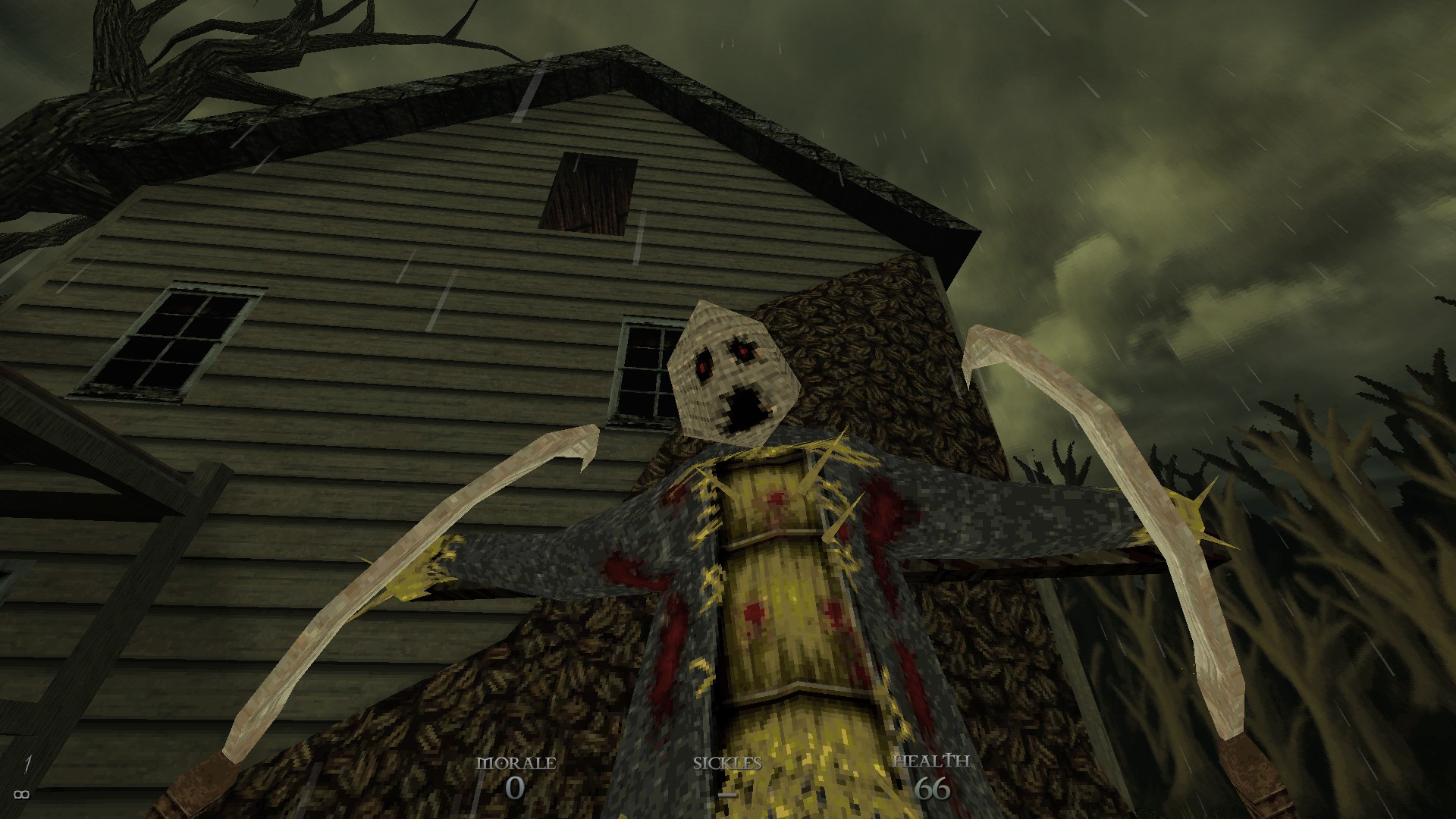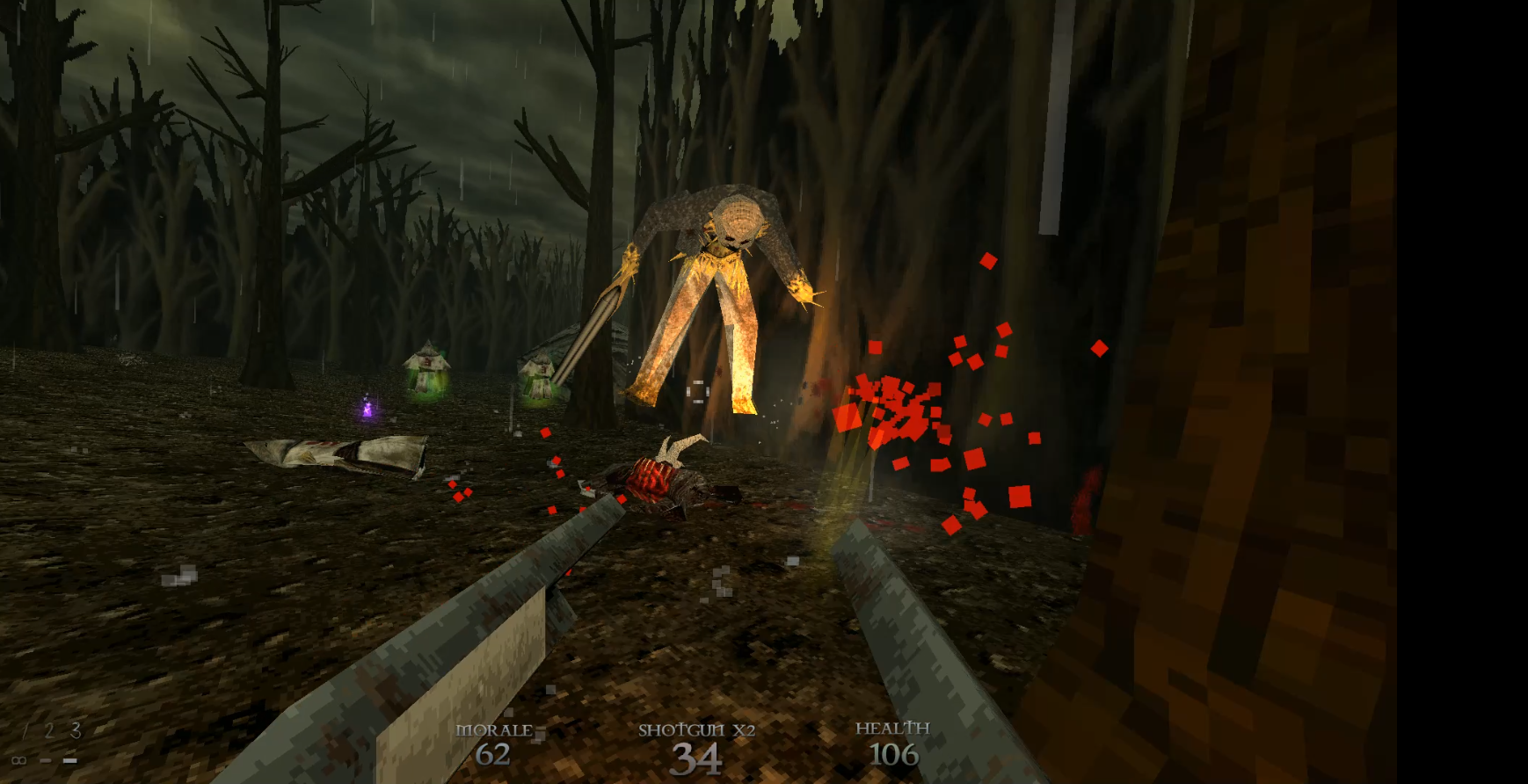Dusk's incredible FPS levels continue where Quake left off
The throwback shooter is both an ode to and evolution of the greatest era of FPS level design.
Even before sitting down with Dusk’s first episode, it wasn’t hard for me to imagine what the experience would be like. It’s not shy about its Quake-and-Doom inspiration, so naturally I expected fast movement, powerful weapons, secret levels, and a cheeky hard rock soundtrack. And these expectations were met admirably. The industrial metal soundtrack by Andrew Hulshult (IDKFA), the deliberately low-poly models, and the accessible bunny hopping tick every box on the Quake-like checklist. It’s easy to walk around Dusk, kick the tires, and say ‘yep, that there’s a retro shooter.’
But what makes Dusk so remarkable is not its ability to imitate its inspiration. Nor is it remarkable because the R key triggers a stylish reload animation (despite the guns not needing to be reloaded) or because it’s possible to do a flip off a jump pad before blasting a rocket into an evil wizard’s face. Those things are really cool though.
OK, seriously though, this is fantastic.
As steadfastly retro and stylish as Dusk is, I can’t get over the density and elaborate design of its handcrafted levels.
Support locale business
The game’s location and namesake—the fictional town of Dusk, PA—is packed with scenes and objects that, despite the ridiculous premise of rural occultism, make sense. It’s a retro aesthetic with modern environmental storytelling touches. There's evidence of satanic seances in empty rooms, and the wider impression of a quiet community lost to hell. If a level’s exit is the entrance to a mine shaft, you can expect the following level to take place in a mine shaft. The game’s woods, farms, and lumber mills felt like distinct places populated by trees, tractors, and heavy machinery, respectively.
This is simple stuff, but it added texture and continuity that drove me to finish the entire episode of 11 levels in one sitting. In stark contrast to Quake’s gray towers and Doom’s weird vision of hell, Dusk is full of landmarks that are easy to describe, and therefore, remember. A Dusk walkthrough sounds like a friendly resident giving a tourist driving directions. Follow the train tracks across the bridge. Enter the farmhouse. Avoid the 7-foot-tall walking scarecrow. Take a left past the grain silo.

I remember countless moments in Quake and Doom where I would only be able to track my progress through a level by whether or not a certain room had enemies and ammo left in it. Dusk avoids this by creating spaces that I could recognize and easily recall.
Keep up to date with the most important stories and the best deals, as picked by the PC Gamer team.
In Dusk's church level, I hesitated in front of the level’s red-doored barn—it’s a huge door that signaled to me that I was in for a big fight. Wanting to stock up on ammo and health first, I circled around the barn to see what I could find, which unfortunately was nothing more than a locked blue door. Several minutes of violence later, blue key in hand, I could hardly forget where that blue door was, because the level had already shown it to me in a moment when I was focused on finding things. That's smart, modern design.
In Quake or Doom, I'd hopelessly circle areas I already visited while praying for a blue door frame to appear at random. We've all prayed to the door gods before. No longer.
Even during a level that takes place in a dark mine shaft, I didn't get lost. At first, I thought this is where Dusk would finally get me turned around and waste an hour of my time. What I got instead was a brilliant stage of small, dark tunnels that inverted the flow of combat from previous levels, all while keeping me on track. Turns out enemies that are trivial in the open can be rather menacing in tight spaces. With distinct transitions between textures from one section to the next and memorable landmarks like mine carts in key rooms, I had enough visual anchors to avoid needless backtracking, as dark and disorienting as it felt. It felt like a place rather than a series of indistinct corridors.
Secrets and speed
As memorable and curious as Dusk’s levels are, the pacing pulled me through them. Whenever I got bored of searching for secrets, I'd stumbled onto a pit full of monsters to kill, sometimes literally, pit and all. Likewise, Dusk knows when to ease off the gas and give me a moment to breathe and explore. After clearing the sawmill of enemies, I couldn’t help but poke around inside to see if I could operate the stationary saw and use it to cut up crates and other debris. Yep.
Then I noticed the ladder to the loft of the building, which contained a new weapon: the hunting rifle. Picking up the rifle spawned a new wave of baddies which were conveniently far away and packed tightly together—a perfect shooting range for Dusk’s equivalent of a rail gun. This kind of steady beat between combat, exploration, reward, combat works extremely well in Dusk’s huge, winding levels.
When I wanted to stray from that curated pacing, I felt rewarded no matter how I played. Each stage lists a par time at the end, amicable to speedrunning strategies thanks to simple bunny hopping techniques and precise air control. It’s also possible to use Half-Life-esque physics objects to skip entire segments of the level.
On the other end of the spectrum, there are secrets everywhere. Every level has plenty of destructible barriers, fake walls, and hidden switches that compensated for the ammo I spent shooting at odd-looking objects. Did I necessarily need one more pistol clip to complete level three? Probably not. Did it feel good digging up an entire graveyard looking for it? Hell yes. For my first play-through, I adopted a mostly mixed strategy that kept me within a few minutes of par time on every stage but also allowed me enough freedom to find, among other secrets, a magic sword that could one-hit most enemies. But I’ll never tell you where.
There are loads of reasons to be excited about Dusk’s full release later this year. New Blood has promised features like an endless horde mode (one map of which is available in the first episode) and full mod support. Online multiplayer dubbed Dusk World is coming in the full release as well, and will be playable at QuakeCon 2017. A co-op mode has been announced for post-launch as well. To me, though, the biggest thrill is that the final version of Dusk will contain 22 more levels that I’ll stay up far too late exploring until I know them like my backyard.


